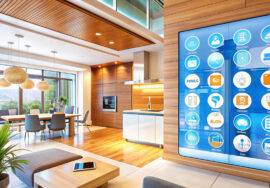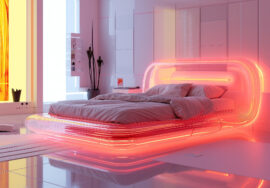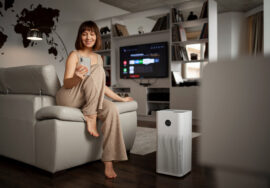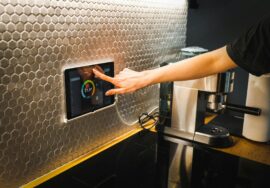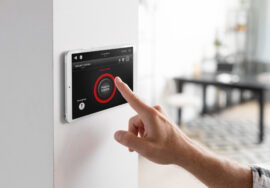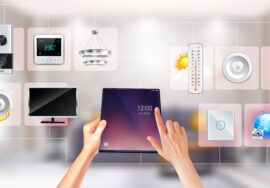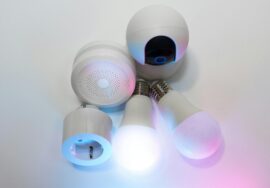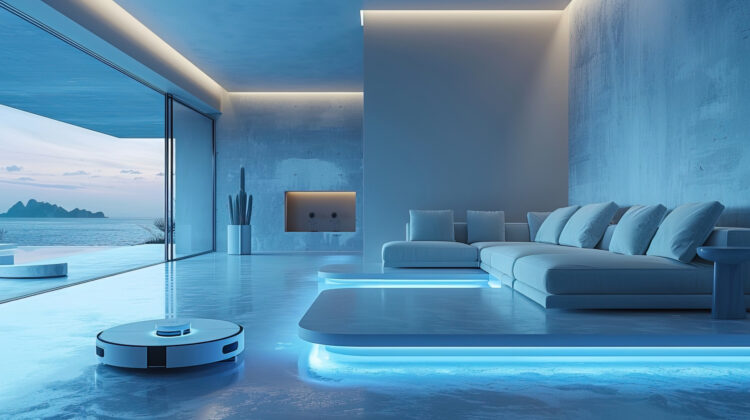
Wellness at Home: Designing Smart Spaces with Circadian Lighting, Air Quality & Health Tech
Introduction: Wellness as the New Smart Home Standard
The Smart Home has moved beyond convenience and entertainment to focus on health and wellness. Modern homeowners are seeking environments that do more than automate lights or play music—they want spaces that actively promote better sleep, improved air quality, and overall well-being. Through circadian lighting, air quality control, and health-focused technology, smart living is now deeply tied to personal wellness.
The Rise of Wellness-Driven Smart Homes
Traditionally, Smart Home adoption was about energy efficiency and comfort. Now, health has become a driving factor. Families spend more time at home, and indoor environments directly impact physical and mental health. Smart solutions, from adaptive lighting systems to air purifiers with AI, are creating spaces designed for balance, productivity, and relaxation.
This shift represents a new category of home technology: wellness-first design, where every connected device contributes to healthier living.
Circadian Lighting: Aligning Homes with Natural Rhythms
Lighting has a direct effect on human biology, particularly our circadian rhythm—the body’s natural 24-hour cycle. Poor lighting can disrupt sleep, productivity, and mood. Smart Home lighting systems address this through:
- Dynamic Color Temperature: Lights that shift from cool white in the morning to warm tones at night to support natural sleep cycles.
- Automated Daylight Mimicking: Smart bulbs and panels that gradually adjust intensity to simulate sunrise and sunset indoors.
- Personalized Profiles: Lighting scenes that adapt to individual preferences for work, relaxation, or sleep preparation.
By aligning with circadian rhythms, smart lighting helps regulate hormones like melatonin and cortisol, leading to better sleep and mental clarity.
Air Quality Monitoring: Breathing Cleaner, Smarter Air
Indoor air quality is often overlooked, yet it greatly impacts respiratory health, allergies, and cognitive performance. Smart Home devices now integrate sensors and purifiers to ensure healthy breathing conditions.
Key features include:
- Real-Time Monitoring: Smart sensors track pollutants like carbon dioxide, VOCs, and particulate matter.
- Automated Purification: Air purifiers and HVAC systems adjust automatically when pollutant levels rise.
- Humidity Control: Smart humidifiers and dehumidifiers maintain balanced levels to prevent dryness or mold growth.
- Integration with Voice Assistants: Receive instant updates on air quality through voice or mobile apps.
With wellness-focused Smart Home setups, air quality data becomes actionable, creating healthier indoor environments with minimal effort.
Smart Bedrooms: The Hub of Restorative Wellness
The bedroom is where wellness technology has the most direct impact. By combining circadian lighting with other Smart Home features, the bedroom transforms into a space optimized for sleep and recovery.
- Sleep Tracking Devices: Sensors embedded in mattresses or wearables provide data on sleep cycles and quality.
- Smart Climate Control: Intelligent thermostats adjust room temperature for ideal sleep conditions.
- Noise-Cancelling Tech: Smart sound systems mask disruptive noises with calming audio.
- Wake-Up Systems: Light-based alarms simulate natural sunrise to gently wake users.
These solutions align technology with human biology, helping create consistent and restorative sleep routines.
Health Tech Integration: From Wearables to Smart Mirrors
Beyond lighting and air quality, wellness-focused Smart Homes also integrate with broader health technologies.
- Smart Mirrors: Display health metrics, daily activity, and wellness reminders while blending into home design.
- Fitness Integration: Smart gyms and AI-driven exercise platforms connect to apps, making workouts personalized and accessible.
- Wearable Syncing: Smartwatches and health bands connect to Smart Home systems, enabling automated adjustments in lighting, temperature, or air quality based on biometrics.
- Wellness Alerts: Systems can send reminders for hydration, posture correction, or breaks during work-from-home routines.
This ecosystem connects personal health data with the living environment, making wellness proactive rather than reactive.
The Mental Health Connection: Creating Calm Spaces
Wellness technology isn’t just physical—it also addresses mental well-being. Smart Homes are increasingly designed to reduce stress and create calming environments.
- Mood Lighting: Custom scenes with warm tones and soothing colors promote relaxation.
- Aromatherapy Devices: Smart diffusers release calming scents like lavender or eucalyptus.
- Mindfulness Tech: Meditation apps synced with lighting and sound systems help establish mindful routines.
- Digital Detox Modes: Smart controls limit notifications and screen exposure during rest periods.
By combining technology with psychology, Smart Homes become sanctuaries for mental balance.
Benefits of Wellness-Centered Smart Homes
- Improved Sleep Quality: Circadian lighting and bedroom tech help regulate natural cycles.
- Better Breathing: Air quality systems reduce risks of respiratory problems.
- Increased Productivity: Environments optimized for health lead to better focus and efficiency.
- Reduced Stress: Calming smart environments support mental well-being.
- Holistic Health Integration: Wearables and apps provide a complete wellness ecosystem.
These benefits illustrate why Smart Home wellness solutions are becoming must-haves for future-forward homeowners.
Challenges and Considerations
While wellness-driven Smart Homes are revolutionary, there are challenges to consider:
- Cost of Integration: Advanced systems like circadian lighting or AI air quality monitors can be expensive.
- Privacy Concerns: Health data shared across devices raises security issues.
- Compatibility Issues: Not all devices sync smoothly within one ecosystem.
- Overdependence on Tech: Wellness should balance natural habits with technological support.
Homeowners should evaluate needs, budgets, and ecosystems before building a wellness-focused Smart Home.
Future Outlook: Smarter, Healthier Living
Looking ahead, the Smart Home will evolve further into intelligent wellness ecosystems. Expect AI-driven systems that predict health needs, sensors that detect early signs of illness, and fully adaptive spaces that personalize lighting, climate, and sound to individual well-being.
The future of Smart Homes is not just connected—it’s consciously designed for wellness.
Conclusion: Designing Wellness Into Everyday Life
Smart Homes are no longer just about automation; they’re about living better, healthier lives. Through circadian lighting, air quality management, and health-focused technology, wellness becomes embedded in daily routines.
By embracing these innovations, homeowners can create spaces that not only function intelligently but also nurture the body and mind. In this new era, Smart Home design and wellness go hand in hand, building environments that support balance, health, and happiness.
